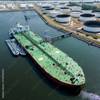Retired Navy Vice Adm. Conrad C. Lautenbacher, Ph.D., undersecretary of commerce for oceans and atmosphere and NOAA administrator, unveiled President Bush's proposed 2005 budget for the Commerce Department's National Oceanic and Atmospheric Administration (NOAA). Speaking to more than 125 stakeholders in Washington, D.C., Lautenbacher said NOAA's request totals $3.4 billion, an increase of $146.9 million over the FY 2004 request.
"This proposed budget maintains and enhances the services and programs for our scientific understanding of the oceans and atmosphere and allow us to sustain the nation's environmental health and economic vitality," said Lautenbacher. "This budget request allows us to develop the science necessary to improve weather, water and ecosystem forecasts of the future, as well as give policy makers the data they need to make important decisions related to climate change."
The budget request is based on NOAA's Strategic Plan goals. Key increases are below.
Weather and Water - to serve society's needs for weather and water information. The $1.41 billion request is an increase of $58.1 million over current program goal levels. Highlights include:
-- $31.7 million increase for NOAA's Geostationary Operational Environmental Satellite (GOES) program that is crucial for spotting atmospheric triggers that can result in severe weather. Funding continues design and risk reduction efforts
towards technology advancement for the new GOES R series satellites to be launched 2012. (Increase includes crosscut funding from other NOAA strategic plan goal programs.)
-- $31 million increase for NOAA's National Polar Orbiting Environmental Satellite System (NPOESS) program that, once operational, will converge existing polar-orbiting satellite systems under a single national program. (Increase includes crosscut funding from other NOAA strategic plan goal programs.)
-- $5.5 million more for NOAA to start twice daily air quality ozone forecasts in northeastern states in 2004. The program could go nationwide by 2008.
Climate - to understand climate variability and change to enhance society's ability to plan and respond. The $369.3 million request is an increase of $28.7 million over current program goal levels. Highlights include:
-- A $10.7 million increase for sustained ocean observation systems. New observing technology allows NOAA to document the ocean's role in climate. This funding will accelerate deployment of moored and free-drifting climate data buoys.
-- $6.6 million more to start a five-year study on aerosols, tiny particles in the atmosphere that act to either heat or cool the atmosphere and represent an area of scientific uncertainty. Research will focus on field and airborne observations of how aerosols interact with clouds to influence climate and improving computer model simulations.
-- $6.5 million more for a carbon cycle atmospheric observing system to study carbon uptake in and around North America. This funding will accelerate deployment of tower and aircraft-based measurements of the vertical profile of carbon dioxide in North America and will produce maps of regional sources and sinks of carbon dioxide.
-- $3.4 million increase for the Comprehensive Large Array Data Stewardship System (CLASS). CLASS will allow development of a state-of-the-art archive management system with a robust, large-volume storage and retrieval system necessary for sharing data with the scientific community.
Ecosystems - to protect, restore and manage the use of coastal and ocean resources through ecosystem approach to management. The $1.158 billion request is an increase of $145.3 million over current program goal levels. Highlights include:
-- $33.8 million increase to complete construction of a third acoustically quiet fisheries survey vessel to collect stock assessments on 54 fish species in the Gulf of Mexico, Atlantic and Caribbean, including shrimp, snapper, grouper, shark, tuna and swordfish.
-- $9.9 million increase to expand and modernize the data collected by fisheries observers in 15 fisheries. Observers are deployed in 43 fisheries, with adequate level of coverage in 29.
-- $6.0 million increase to more adequately assess fish stocks around the country, including monkfish, white and blue marlin, thornyhead, yellowtail rockfish, Pacific mackerel and bottomfish around Hawaii.
-- $5.3 million increase to expand the use of satellite monitoring of commercial fishing vessels for enforcement of fishing rules and collection of scientific data.
-- $12.0 million increase for research and action programs to help restore 12 species of threatened and endangered salmon in the Pacific Northwest and the Klamath Basin.
-- $6.5 million more to streamline the regulatory and administrative processes of fisheries management and analyzing environmental impacts of protected species.
-- $2.0 million more to conduct additional surveys and improve population estimates and predictive models for whales, loggerhead sea turtles and other key species.
Commerce and Transportation - support the nation's commerce with information for safe, efficient and environmentally sound transportation. NOAA is requesting $252.1 million, an increase of $23.1 million over current program levels, to address this goal. Highlights include:
-- $8.6 million increase for the charter of hydrographic survey vessels to map more of the nation's ports and coastal waterways.
-- $2.0 million more is requested to make 90 more nautical charts available electronically. The Electronic Navigational Charts program provides mariners a quick and safe method of navigating U.S. waters, and are a tools for rapid emergency response for hurricanes, shipwrecks and Homeland Security concerns.
Sponsored Content
Innovative Hull Maintenance: Profitable & Green

Subscribe for
Maritime Reporter E-News
Maritime Reporter E-News is the maritime industry's largest circulation and most authoritative ENews Service, delivered to your Email five times per week












